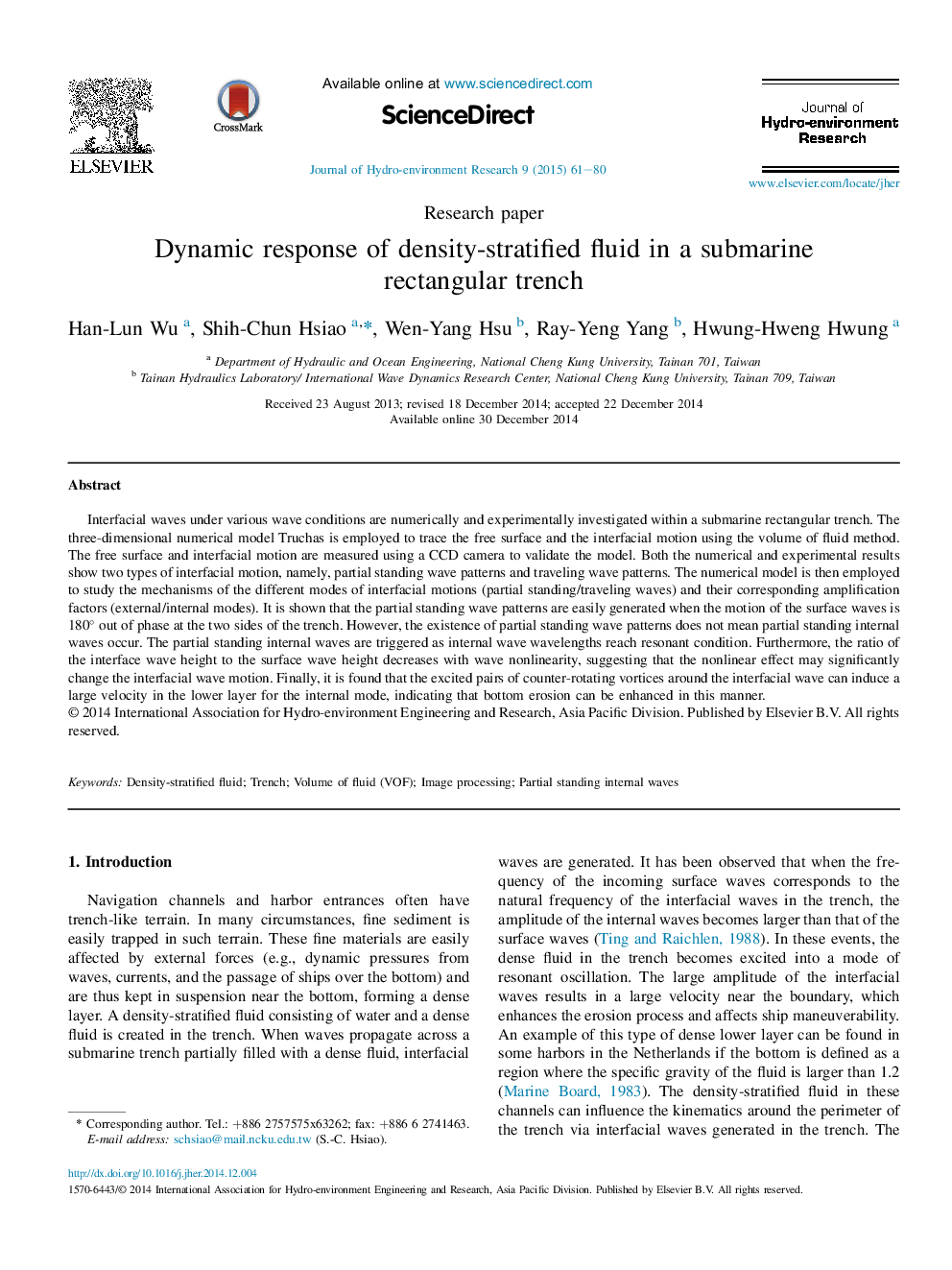| کد مقاله | کد نشریه | سال انتشار | مقاله انگلیسی | نسخه تمام متن |
|---|---|---|---|---|
| 4493735 | 1318666 | 2015 | 20 صفحه PDF | دانلود رایگان |
• Evolution of a standing internal wave under periodic wave is displayed.
• Wave nonlinearity is important for amplitude response of interfacial waves.
• Standing internal wave is formed as internal wave wavelength reach resonant state.
• Standing waves pattern is formed as surface waves are out of phase at trench’s sides.
• Large velocity in the lower layer is induced for the internal mode.
Interfacial waves under various wave conditions are numerically and experimentally investigated within a submarine rectangular trench. The three-dimensional numerical model Truchas is employed to trace the free surface and the interfacial motion using the volume of fluid method. The free surface and interfacial motion are measured using a CCD camera to validate the model. Both the numerical and experimental results show two types of interfacial motion, namely, partial standing wave patterns and traveling wave patterns. The numerical model is then employed to study the mechanisms of the different modes of interfacial motions (partial standing/traveling waves) and their corresponding amplification factors (external/internal modes). It is shown that the partial standing wave patterns are easily generated when the motion of the surface waves is 180° out of phase at the two sides of the trench. However, the existence of partial standing wave patterns does not mean partial standing internal waves occur. The partial standing internal waves are triggered as internal wave wavelengths reach resonant condition. Furthermore, the ratio of the interface wave height to the surface wave height decreases with wave nonlinearity, suggesting that the nonlinear effect may significantly change the interfacial wave motion. Finally, it is found that the excited pairs of counter-rotating vortices around the interfacial wave can induce a large velocity in the lower layer for the internal mode, indicating that bottom erosion can be enhanced in this manner.
Journal: Journal of Hydro-environment Research - Volume 9, Issue 1, March 2015, Pages 61–80
